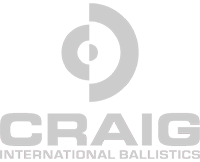INDUSTRY BALLISTIC AND STAB RESISTANT STANDARDS
- NIJ Standard - 0101.04
- NIJ Standard - 0101.06
- NIJ Standard - 0115.00
- NIJ Standard - 0108.01
- AS/NZS 2343:1997
- MIL-STD-662F
- EN 1063: 1999
- NATO AEP-55 STANAG 4569
NIJ Standard – 0101.04 Ballistic Resistance of Personal Body Armor (Revision A – June 2001) (superseded)
| number | of | shots: | |||||||||
| Type | Round | Ammunition | Bullet Mass | Velocity | Hits at 0° angle | Max BFS | Hits at 30° angle | per panel | per sample | per threat | |
| II-A | 1 | 9 mm FMJ RN | 8.0g 124gr. | 332 m/s (1090ft/s) | 4 | 44mm (1.73in) | 2 | 6 | 12 | 24 | |
| 2 | 40 S&W FMJ | 11.7g 180gr. | 312 m/s (1025ft/s) | 4 | 44mm (1.73in) | 2 | 6 | 12 | 24 | ||
| II | 1 | 9 mm FMJ RN | 8.0g 124gr. | 367 m/s (1205ft/s) | 4 | 44mm (1.73in) | 2 | 6 | 12 | 24 | |
| 2 | 357 Magnum JSP | 8.0g 124gr. | 427 m/s (1400ft/s) | 4 | 44mm (1.73in) | 2 | 6 | 12 | 24 | ||
| III-A | 1 | 9 mm FMJ | 8.2g 124gr. | 427 m/s (1400ft/s) | 4 | 44mm (1.73in) | 2 | 6 | 12 | 24 | |
| 2 | 44 Mag SJHP | 15.6g 240gr. | 427 m/s (1400ft/s) | 4 | 44mm (1.73in) | 2 | 6 | 12 | 24 | ||
| III | 1 | 7.62 mm NATO M80 FMJ | 9.6g 148gr. | 838 m/s (2750ft/s) | 6 | 44mm (1.73in) | 0 | 6 | 12 | 12 | |
| IV | 1 | 30 cal M2 AP | 10.8g 166gr. | 869 m/s (2850ft/s) | 1 | 44mm (1.73in) | 0 | 1 | 2 | 2 | |
Scroll right for all details if not visible, or download the NIJ 0101.04 PDF
PURPOSE AND SCOPE
The purpose of this standard is to establish minimum performance requirements and test methods for the ballistic resistance of personal body armor intended to protect the torso against gunfire.
This standard is a general revision of NIJ Standard-0101.03, dated April 1987, updating the labeling requirements, acceptance criteria, test ammunition, procedures, and other items throughout the standard. Revision A of NIJ Standard-0101.04, dated June 2001, provides clarification to the text, methodology and test procedures of NIJ Standard-0101.04.
The scope of the standard is limited to ballistic resistance only; this standard does not address threats from knives and sharply pointed instruments, which are different types of threat.
NIJ Standard – 0101.06 Ballistic Resistance of Body Armor (July 2008)
| number | of | shots: | |||||||||
| Type | Round | Ammunition | Bullet Mass | Velocity | Hits at 0° angle | Max BFS | Hits at 30° angle | Hits at 45° angle | per panel | per sample | per threat |
| II-A | 1 | 9 mm FMJ RN | 8.0g 124gr. | 373 m/s (1225ft/s) | 4 | 44mm (1.73in) | 1 | 1 | 6 | 12 | 120 |
| 2 | 40 S&W FMJ | 11.7g 180gr. | 352 m/s (1155ft/s) |
4 | 44mm (1.73in) | 1 | 1 | 6 | 12 | 120 | |
| II | 1 | 9 mm FMJ RN | 8.0g 124gr. | 398 m/s (1305ft/s) | 4 | 44mm (1.73in) | 1 | 1 | 6 | 12 | 120 |
| 2 | 357 Magnum JSP | 10.2g 158gr. | 436 m/s (1225ft/s) | 4 | 44mm (1.73in) | 1 | 1 | 6 | 12 | 120 | |
| III-A | 1 | 357 Sig FMJ Flat Nose |
8.1g |
448 m/s (1470ft/s) | 4 | 44mm (1.73in) | 1 | 1 | 6 | 12 | 120 |
| 2 | 44 Mag SJHP | 15.6g 240gr. | 436 m/s (1430ft/s) | 4 | 44mm (1.73in) | 1 | 1 | 6 | 12 | 24 | |
| III | 1 | 7.62 mm NATO M80 FMJ | 9.6g 147gr. | 847 m/s (2780ft/s) | 6 | 44mm (1.73in) | 0 | 0 | 6 | 6 | 48 |
| IV | 1 | 30 cal M2 AP | 10.8g 166gr. | 878 m/s (2880ft/s) | 1~6 | 44mm (1.73in) | 0 | 0 | 1~6 | 1~6 | 36 |
Scroll right for all details if not visible, or download the NIJ 0101-06 PDF
PURPOSE AND SCOPE
Ballistic Resistance of Body Armor NIJ Standard-0101.06 establishes minimum performance requirements and test methods for the ballistic resistance of personal body armor designed to protect the torso against gunfire.
The standard is limited to ballistic resistance only and does not address resistance from knives or other sharply pointed objects. It reviews NIJ body armor classifications, details requirements (e.g., acceptance criteria, workmanship and armor backing material), and discusses test methods (e.g., velocity measurement equipment, wet conditioning and test preparation).
This standard supersedes NIJ 2005 Interim Requirements, Ballistic Resistance of Body Armor (August 2005) and also supersedes NIJ Standard-0101.04 Rev. A, Ballistic Resistance of Personal Body Armor (June 2001).
NIJ Standard – 0115.00 – Stab Resistance of Personal Body Armour
| Protection Level | “E1” Strike Energy | “E2” Overtest Strike Energy | ||
| J | ft. lbf | J | ft. lbf | |
| 1 | 24 ± 0.50 | 17.7 ± 0.36 | 36 ± 0.60 | 26.6 ± 0.44 |
| 2 | 33 ± 0.60 | 24.3 ± 0.44 | 50 ± 0.70 | 36.9 ± 0.51 |
| 3 | 43 ± 0.60 | 31.7 ± 0.44 | 65 ± 0.80 | 47.9 ± 0.59 |
Scroll right for all details if not visible, or download the NIJ Standard – 0115.00 PDF
PURPOSE AND SCOPE
The purpose of this standard is to establish minimum performance requirements and methods of test for the stab resistance of personal body armor intended to protect the torso against slash and stab threats.
This standard is based on technical work performed by many organizations: in the United Kingdom by the Police Scientific Development Branch, and in the United States by the National Institute of Standards and Technology and its subcontractors.
The scope of the standard is limited to stab resistance only. The standard does not address ballistic threats, as those are covered by NIJ Standard–0101.04, Ballistic Resistance of Personal Body Armor. The standard does not directly address slash threats; however, testing has shown that stab threats are by far the more difficult to defeat, and that body armor capable of defeating stab threats will perform satisfactorily against slash threats.
Read or Download the Complete Documentation (PDF)
NIJ Standard – 0108.01 Ballistic Resistant Protective Materials
| Type | Ammunition | Bullet Mass | Barrel Length | Velocity | Hits Per Specimen | Penetrations |
| I | 22 LRHV | 2.6g | 15~16.5cm | 320 ± 12m/s | 5 | 0 |
| Lead | 40gr | 6~6.5in | 1050 ± 40ft/s | |||
| 38 Special | 10.2g | 15~16.5cm | 259 ± 15m/s | 5 | 0 | |
| Lead | 158gr | 6~6.5in | 850± 50ft/s | |||
| II-A | 357 Magnum | 10.2g | 10~12cm | 381 ± 15m/s | 5 | 0 |
| JSP | 158gr | 4~4.75in | 1250 ± 50ft/s | |||
| 9mm | 8.0g | 10~12cm | 332 ± 12m/s | 5 | 0 | |
| FMJ | 124gr | 4~4.75in | 1090 ± 40ft/s | |||
| II | 357 Magnum | 10.2g | 15~16.5cm | 425 ± 15m/s | 5 | 0 |
| JSP | 158gr | 6~6.5in | 1359 ± 50ft/s | |||
| 9mm | 8.0g | 10~12cm | 358 ± 12m/s | 5 | 0 | |
| FMJ | 124gr | 4~4.75in | 1175 ± 40ft/s | |||
| III-A | 44 Magnum | 15.55g | 14~16cm | 426 ± 15m/s | 5 | 0 |
| Lead SWC Gas Checked | 240gr | 5.5~6.25in | 1400 ± 50ft/s | |||
| 9mm | 8.0g | 24~26cm | 426 ± 15m/s | 5 | 0 | |
| FMJ | 124gr | 9.5~10.25in | 1400 ± 50ft/s | |||
| III | 7.62mm 308 Winchester | 9.7g | 56cm | 838 ± 15 m/s | 5 | 0 |
| FMJ | 150gr | 22in | 838 ± 15 m/s | |||
| IV | 30~06 | 10.8g | 56cm | 868 ± 15m/s | 1 | 0 |
| AP | 166gr | 22in | 2850 ± 50ft/s | |||
Scroll right for all details if not visible, or download the NIJ Standard – 0108.01 PDF
PURPOSE AND SCOPE
The purpose of this standard is to establish minimum performance requirements and methods of test for ballistic resistant protective materials. This standard supersedes NIJ Standard-0108.00, Ballistic Resistant Protective Materials, dated December 1981. This revision adds threat level III-A and establishes threat level classifications that are consistent with other NIJ standards for ballistic protection.
This standard is applicable to all ballistic resistant materials (armor) intended to provide protection against gunfire, with the exception of police body armor and ballistic helmets, which are the topic of individual NIJ performance standards [1,2]1.
Many different types of armor are now available that range in ballistic resistance from those designed to protect against small-caliber handguns to those designed to protect against high-powered rifles. Ballistic resistant materials are used to fabricate portable ballistic shields, such as a ballistic clipboard for use by a police officer; to provide ballistic protection for fixed structures such as critical control rooms or guard stations; and to provide ballistic protection for the occupants of vehicles. The ballistic resistant materials used to fabricate armor include metals, ceramics, transparent glazing, fabric, and fabric-reinforced plastics; they are used separately or in combination, depending upon the intended threat protection.
AS/NZS 2343:1997 Standard – Australian and New Zealand Standards
| Classification of Panel | Calibre | Ammunition *3 | Measure Velocity within 2.5m of Target (m/s) *2 |
Minimum Range (m) *3 | Number of Strikes | Pattern of Strikes |
| Class G0 | 9mm Military Parabellum | MK 2Z Standard 9mm 7.4g metal case bullet | 405 ± 15 | 3 | 3 | Shot centres 100mm (+10; -10mm) apart forming an equilateral triangle within square of 200mm per side centrally located on panel |
| Class G1 | 357 Magnum | 10.2g Soft point semi-jacketed flat nose | 405 ± 15 | 3 | 3 | |
| Class G2 | 44 Magnum | 15.6g Soft Point semi-jacketed flat nose | 480 ± 15 | 3 | 3 | |
| Class R1 | 5.56mm | M 193 5.56mm 3.6g full metal case bullet | 980 ± 15 | 10 | 3 | Shot centres 100mm (+10; -10mm) apart forming an equilateral triangle within square of 200mm per side centrally located on panel |
| Class R2 | 7.62mm | NATO Standard 7.62mm 9.3g full metal case bullet | 850 ± 15 | 10 | 3 | |
| Class S0 | 12 Gauge (Full Choke) | 12 Gauge 70mm high velocity magnum 32g SG shot | 400 ± 20 | 3 | 2 | Shot Centres 100mm (+20-0mm) apart with a square of 200mm per side centrally located on panel |
| Class S1 | 12 Gauge (Full Choke) | 12 Gauge 70mm 28.35g single slug | 450 ± 20 | 3 | 2 | |
Scroll right for all details if not visible, or download the AS/NZS 2343:1997 PDF
* Class R: simulated attack by rifle
* Class S: simulated attack by shotgun
PURPOSE AND SCOPE
This Standard specifies requirements for bullet-resistant panels and elements according to their performance in preventing penetration by projectiles discharged from firearms under controlled conditions.
This Standard applies to transparent, opaque and translucent panels and other components including but not restricted to frames, mullions, voice transfer louvres and pass-through devices (elements).
MIL-STD-662F – V50 Ballistic test for Armor
PURPOSE AND SCOPE
1. SCOPE
1.1 Purpose. The purpose of this standard is to provide general guidelines for procedures, equipment, physical conditions, and terminology for determining the ballistic resistance of metallic, nonmetallic and composite armor against small arms projectiles.
The ballistic test procedure described in this standard determines the V50 ballistic limit of armor.
1.2 Application. This test method standard is intended for use in ballistic acceptance testing of armor and for the research and development of new armor materials. This ballistic test method is applicable to the following types of armor:
a. Body armor.
b. Armored seats for aircraft and ground vehicles.
c. Crew station armor for military aircraft.
d. Internal and external armor for aircraft.
e. Transparent armor, such as windows, windshields and vision blocks for aircraft and ground vehicles.
f. Bulkhead armor for shipboard use.
g. Structural or integral armor for use on ship exteriors.
h. Armor for military tactical shelters (AFWAL-TR-82-4163).
i. Visors for eye and face protection.
j. Armor for potential space applications.
k. Armor for light and heavy combat vehicles and structures.
EN Standard – European Standard EN 1063: 1999 Security Glazing Ballistic Standard
| Type | Calibre | Cartridge | Velocity | No. Shots | Shot Spacing | No. Samples | Test Temp |
| BR1 | .22 LR | 40 grain Lead Round Nose | 1048~1214 ft/sec | 3 | 4.3~5.1in Triangle | 3 | 55~73F |
| BR2 | 9mm Luger | 124 grain Full Steel Jacket Round Nose Soft Core | 1280~1345 ft/sec | 3 | 4.3~5.1in Triangle | 3 | 55~73F |
| BR3 | .357 Magnum | 158 grain Full Steel Jacket Conned Soft Core | 1378~1444 ft/sec | 3 | 4.3~5.1in Triangle | 3 | 55~73F |
| BR4 | .44 Magnum | 240 grain Full Copper Jacket Flat Nose Soft Core | 1411~1476 ft/sec | 3 | 4.3~5.1in Triangle | 3 | 55~73F |
| BR5 | 5.56 x 45 NATO (.223 Remington) | 62 grain type SS109 (Steel Penetrator) | 3084~3150 ft/sec | 3 | 4.3~5.1in Triangle | 3 | 55~73F |
| BR6 | 7.62 x 51 NATO (.308 Winchester) | 147 grain Full Steel Jacket (M80) | 2690~2756 ft/sec | 3 | 4.3~5.1in Triangle | 3 | 55~73F |
| BR7 | 7.62 x 51 NATO (.308 Winchester) | 150 grain Full Copper Jacket Steel Hard Core | 2657~2723 ft/sec | 3 | 4.3~5.1in Triangle | 3 | 55~73F |
| SG1 | 12 Gauge | 478 grain Solid Lead Brenneke Slug (1.09 ounce) | 1312~1444 ft/sec | 1 | n/a | 3 | 55~73F |
| SG2 | 12 Gauge | 478 grain Solid Lead Brenneke Slug | 1312~1444 ft/sec | 3 | 4.3~5.1in Triangle | 3 | 55~73F |
Scroll right for all details if not visible, or download the EN 1063: 1999 PDF
NATO AEP-55 STANAG 4569 – Protection levels for Occupants of Logistic and Light Armoured Vehicles
| Level | KE Threat | Bullet | Distance | Velocity* |
| I | Rifle | 7.62 x 51 NATO Ball (Ball M80) | 30 Metres | 833m/sec (M80) |
| 5.56 x 45 NATO SS109 | 900m/sec (SS109) | |||
| 5.56 x 45 M193 | 937m/sec (M193) | |||
| II | Infantry Rifle | 7.62 x 39 API BZ | 30 Metres | 695m/sec |
| III | Sniper Rifle | 7.62 x 51 AP (WC core) | 30 Metres | 930m/sec (51 AP) |
| 7.62 x 54R B32 API (Dragunov) | 854m/sec (54R) | |||
| IV | Heavy Machine Gun | 14.5x114AP / B32 | 200 Metres | 911m/sec |
| V | Automatic Cannon | 25mm APDS-TM-791 or TLB 073 | 500 Metres | 1258m/sec |
* Velocity tolerance is ± 20m/sec.
PURPOSE AND SCOPE
This AEP describes the system qualification and acceptance procedure for determining the Protection Level of logistic and light armoured vehicles (LAV) for KE and artillery threats. The threats to be considered are small and medium caliber kinetic energy (KE) ballistic projectiles and fragment simulating penetrators (FSP) representing artillery shell fragments, as defined in STANAG 4569 Annex A (summarised in Annex A of the AEP-55).
This process includes standard techniques and reproducible test procedures for evaluating the ballistic resistance of vehicle armour components (integral, add-on, opaque and transparent) as well as the required vehicle Vulnerable Area assessment.
Explore the Possibilities
CONTACT US
Craig International Ballistics
+61 7 5563 1099
PO Box 3609 Helensvale Town Centre, Queensland 4212 Australia


